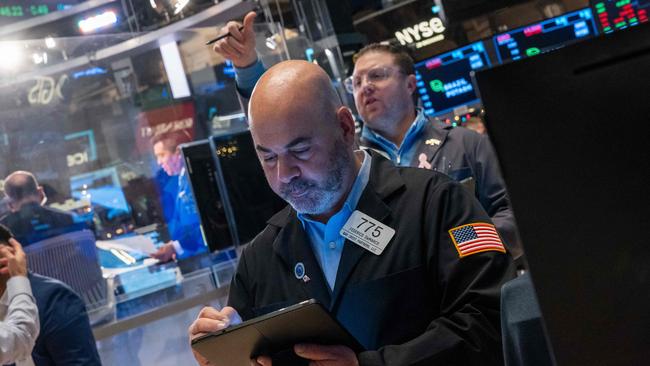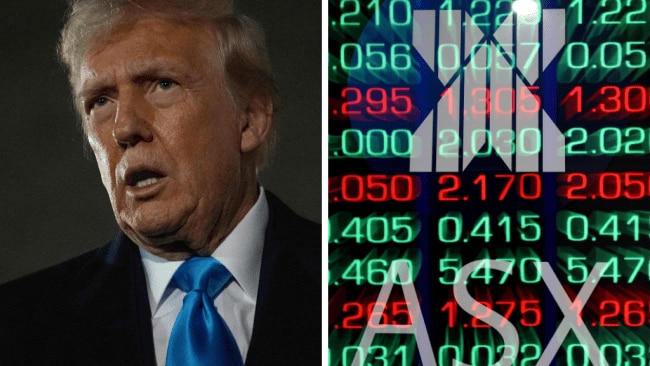Wall Street rebound cause for optimism on Australian sharemarket
The Australian sharemarket is on track to open modestly higher on Monday, after Wall Street decisively broke a run of steep losses.

The local sharemarket was on track to open modestly higher on Monday, after Wall Street decisively broke a run of steep losses.
S&P/ASX 200 futures were pointing to a rise of 0.2 per cent, or 13 points, to 8079 at the start of local trade.
The uptick followed a week of volatile trade, highlighted by Wall Street’s Wednesday night rout in which the S&P500 index fell 3 per cent in one session.
But new US inflation data stemmed investor fears, while the passage of US government funding bill after the session’s end also gave reason for optimism.
The Federal Reserve’s preferred measure of inflation on Friday night showed prices rising 0.1 per cent in November, below the 0.2 per cent that economists had predicted. That gave US traders a green light to buy.
The Australian dollar ticked up to US62.51c, up around one-third of a US cent from Friday’s close.
Spot gold lifted 1.1 per cent, or $US28.90, to $US26,22.91 per ounce.
“The market was already trading on the edge of a knife, so the smallest thing can have such an outsized reaction,” said David Volpe, president and deputy chief-investment officer at Wall Street investment manager Emerald Advisers.
Television interviews by two Fed officials on Friday stoked traders’ optimism that the central bank intends to continue to cut rates in 2025, even if at a slower pace than they had been expecting before this week, Mr Volpe said.

Meanwhile, more than $US6 trillion ($9.6 trillion) in US options expired on Friday, an unusually high volume that added to the wild trading action.
It pushed the Dow Jones Industrial Average and the S&P 500 to their best day since last month’s big post-election rally, ending an otherwise downbeat week for stocks on a high note.
The Dow added 498 points, or 1.2 per cent, the day after the blue-chip index narrowly ended a 10-session skid.
The S&P 500 rose 1.1 per cent while the technology-heavy Nasdaq Composite gained 1 per cent.
Each of the major US indexes still ended the week down at least 1.8 per cent, the result of Wednesday’s sell-off following the Federal Reserve’s signal that interest rates might stay higher in 2025 than investors had expected. The Dow ended 2.3 per cent lower, its third straight weekly decline.
US bond yields declined on Friday. The yield on benchmark 10-year Treasury notes ended at 4.522 per cent. Yields had been climbing for two days to settle at 4.569 per cent on Thursday.
Bitcoin prices also whipsawed on Friday. The cryptocurrency reached a record high above $US108,000 last week and had fallen below $US93,000 early on Friday. It rebounded to end at $US96,377.74, lifting US stocks such as Coinbase, MicroStrategy and Robinhood.
Meanwhile, the Stoxx Europe 600 index shed 0.9 per cent after president-elect Donald Trump threatened tariffs if the EU doesn’t buy more US oil and natural gas.
In commodities, US natural-gas futures hit a 2024 high. Futures for January delivery rose 4.6 per cent to end at $US3.748 per million British thermal units, the highest price since last January.
The onset of wintry weather in the East is lifting demand for the heating and power-generation fuel, which is about 44 per cent more expensive than a year ago.
Friday’s gains were across the board. All 11 of the S&P 500’s industry segments closed higher, led by interest-rate sensitive real-estate and bank stocks.
Greg Wilensky, head of US fixed income at Janus Henderson Investors, said Friday’s reading of the Commerce Department’s personal-consumption expenditures price index was not low enough to necessitate a January rate cut.
“This data does help improve the outlook for more cuts over 2025 than the market currently has priced in,” he said.
Additional reporting: Dow Jones newswires



